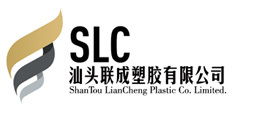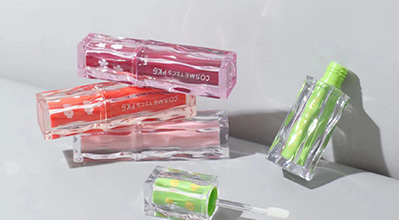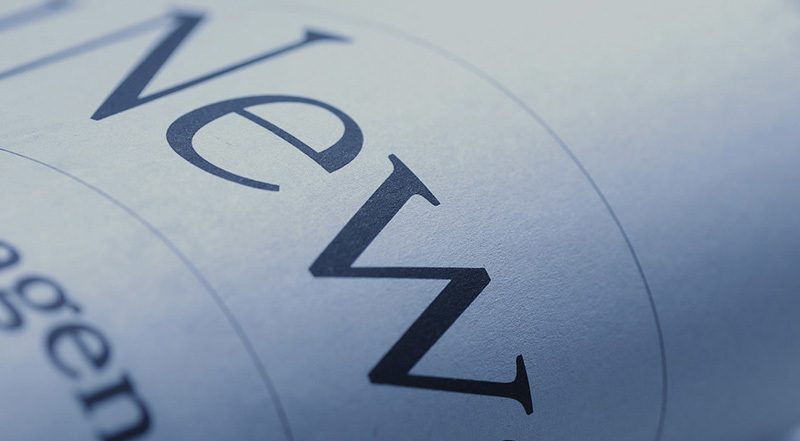ABOUT US
ShanTou LianCheng Plastic Co.LTD
Shantou Liancheng Hardware & Plastic Co., Ltd. is a company specializing in the design, development, production and sale of cosmetics packing containers. The company has 21 years of experience in production of material makeup bag, after continuous development, with lipstick, lip gloss, eye shadow and mascara container on thousands of styles, fashionable and generous,
View moreNew Center
Market and Business Opportunities Analysis of Cosmetic Packaging
Cosmetic packaging is a rapidly growing sub field in recent years. In the era of eyeball economy and lipstick effect, cosmetic packaging presents characteristics such as exquisite printing, structural irregularity, brand niche, and server-side end-to-end. For companies struggling in the fiercely competitive packaging industry, it is time to study the business opportunities brought about by the development and changes in the cosmetics industry. Below, we will share streamlined information about the cosmetics industry with you. Interested parties can bookmark it. 01. Industry scale and growth potential China is the second largest consumer of cosmetics after the United States, accounting for 12.7% of the global cosmetics market. As the second largest consumer of cosmetics, the size of China's beauty and personal care market reached 477.7 billion yuan in 2019, a year-on-year increase of 13.8%. Compared with other consumer industries, according to data from the National Bureau of Statistics, the retail sales of cosmetics in China increased by 12% year-on-year in 2019, second only to the daily necessities category, which grew by 13%. 02. Industry representative brands and corresponding companies In the Chinese cosmetics market, the market share of domestic brands is slightly higher than that of international brands. By 2018, the market share of domestic cosmetics brands had increased to 56%. The high-end market is controlled by international brands, while domestic brands mostly target the mass market. Domestic brand channels are deeply sinking, with obvious advantages in the offline market of third and fourth tier. From the online perspective, the most significant change in 2019 is the rise of Tiktok E-commerce and Taobao Live, which further shortens the distance between users' "planting grass" and purchase. With advantages such as wide channels, high cost-effectiveness, and fast supply chain response, the market share of domestic cosmetics brands continues to increase. Chinese domestic cosmetic brand listed companies mainly include companies such as Perlier, Marumi, Shanghai Jiahua, Yujiahui, Huaxi Biotechnology, and Betaine. Among them, Shanghai Jiahua was established the earliest and has many local traditional brands, such as Baicaoji, Meijiajing, Liushen, Jia'an, Shuangmei, etc. Although Huaxi Biotechnology was established in 2000, most of its independent brands were established in the past two years, such as BM and Mibeier. Yujiahui was established relatively late, but its brands such as Yunifang and Xiaomishou are as well-known as traditional old brands. Basic information of brands of major listed companies in the Chinese cosmetics industry: 03. Sales performance of industry representative brands The sales of local brands such as Kuadi and Runbaiyan under Huaxi Biotechnology, Love Fire under Marumi, Qichu under Shanghai Jiahua, Yunifang and Huayaohua under Yujiahui, and Winona under Betani have all grown rapidly. From 2019.07-2020.08, the sales of makeup/perfume/beauty tools on Taoxi platform showed that the sales and sales of Caitang under Pelaia, Love Fire under Marumi, Shuangmei under Shanghai Jiahua and Shiyi under Yujiahui grew rapidly.
Learn More
Cosmetic packaging materials are going up in price
It seems that the cosmetics industry has been struggling with price increases throughout the year. After carbomer, non-woven fabric, glycerin, and organosilicon, plastic batons have experienced a resurgence of price increases. Yes, the prices of (packaging materials) raw materials have increased, and ABS has also increased. However, when the prices of upstream raw materials increase and the international epidemic affects export business, some cosmetics packaging materials companies use "adding insult to injury" to indicate their situation. ABS prices surged by 33.33% In recent months, the continuous increase in raw material prices, from glycerol to organosilicon, and then to plastics, has been testing the heartbeat of cosmetics practitioners. The person in charge of a certain cosmetics packaging company introduced to Qingyan that the price of ABS (acrylonitrile styrene butadiene copolymer) has increased, and PP (polypropylene) has also slightly increased. It is said that it is difficult to order materials now. According to Business Society, which focuses on researching commodity price trends, as of November 17th, the price of ABS has risen to 19000 yuan/ton, an increase of 33.33%. From the chart below, it can also be seen that since October, the price of ABS has skyrocketed without any downward trend. Specifically, on November 17th, several companies including CNPC North China, CNPC East China, Ningbo LG Yongxing, and others raised their ABS quotes compared to the previous day, with prices not lower than 17500 yuan/ton. Under the tense supply and demand relationship, some ABS manufacturers have closed down and stopped selling.
Learn More
A reporter from Cosmetics Finance Online found through exhibitions and interviews that whether it is glass bottles or plastic bottles, cosmetics packaging material manufacturers are pursuing high transparency of their products. According to Tong Yidong, the sales manager of Barrolan (Shanghai) Co., Ltd. from Italy, which specializes in glass packaging materials, customers have increasingly high quality requirements for glass packaging. "Glass packaging is gradually developing towards mid to high end, and transparency is an important consideration standard in the game between product quality and price." Tong Yidong gave an example to the reporter: When Mary Kay was considering cooperating with Barrolan, she saw that Barrolan's nail polish bottle had almost the same appearance as its product, but Mary Kay's nail polish bottle was noticeably yellowed, and the transparency was far less than Barrolan's; After various colors of nail polish are put into the bottle, the color quality begins to be affected, and the color quality of the bottle with low permeability is not good. "Packaging materials that appear to have the same appearance actually have significant differences in quality." However, Tong Yidong also stated that currently, most skincare packaging materials in the Chinese market are made of plastic materials, and glass bottles are only a niche market. "It is worth emphasizing that the domestic market is still developing, and the market for glass packaging materials will become increasingly broad in the future. What we need to do is to clearly control the target customer group and strive for our own market share as much as possible." In addition, "thick bottomed" bottles have also been a major trend in the cosmetics market recently. "Thick bottomed bottles have better quality, higher technical requirements, and a more textured appearance," said Li Feng, a designer at Aida International Trade Co., Ltd. Generally, thick bottomed bottles use injection molding technology, while thin bottomed bottles use blow molding technology. The former requires higher technical requirements. The reporter learned from Aida International that PETG material is gradually replacing the original PP and PET materials in plastic packaging bottles for cosmetics in the current market. "PETG material is equivalent to an upgraded version of PET material, which is more corrosion-resistant, has higher light transmittance, and is also more resistant to impact. The molding method is mostly injection molding technology, resulting in better quality." Paper packaging materials are constantly innovating, and environmental protection concepts are becoming more deeply rooted in people's hearts "The paper packaging market is currently in a stable state, with significant differences in customer needs." Zheng Junjie, General Manager of Shenzhen Caixingda Luxury Packaging Co., Ltd., told Cosmetics Finance Online that in order to meet the needs of different customers, follow-up processing will be carried out on paper packaging. The added value brought by these "handmade" processes can make products more distinctive and enhance competitiveness. It is understood that Caixingda Company's customers mainly come from foreign markets such as the Middle East, the United States, and Europe. Middle Eastern customers demand extremely luxurious packaging, American customers demand simplicity and high cost-effectiveness, while European customers pursue low-key luxury. According to different customer needs, Caixingda has put in a lot of effort in the later stages of packaging, such as inlaying diamonds on the box, embedding velvet, pasting pearls, local pearl film, simulating touch, and three-dimensional visual effects. "Compared to domestic enterprises, foreign enterprises pay more attention to packaging, showcasing products through packaging, and enhancing brand image." Yu Liangjie, sales manager of Mohawk Fine Paper Asia in the United States, told reporters that since 2014, domestic enterprises have also increasingly focused on packaging and environmental protection. "Therefore, we believe that Chinese paper packaging will become increasingly high-end, and environmentally friendly materials will also be more popular and recognized."
Learn More
Cosmetic packaging material testing items and testing standards
Cosmetic packaging material testing items Barrier performance, heavy metals, friction coefficient, tensile strength and elongation, appearance, heat resistance, cold resistance, pH value, total bacterial count, total mold and yeast count, compatibility, peel strength, mild hot air, sealing and leakage, impact resistance, thickness, solvent residue, printing quality, etc.
Learn More











